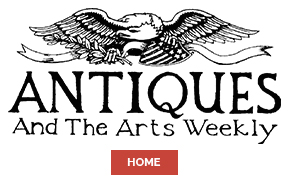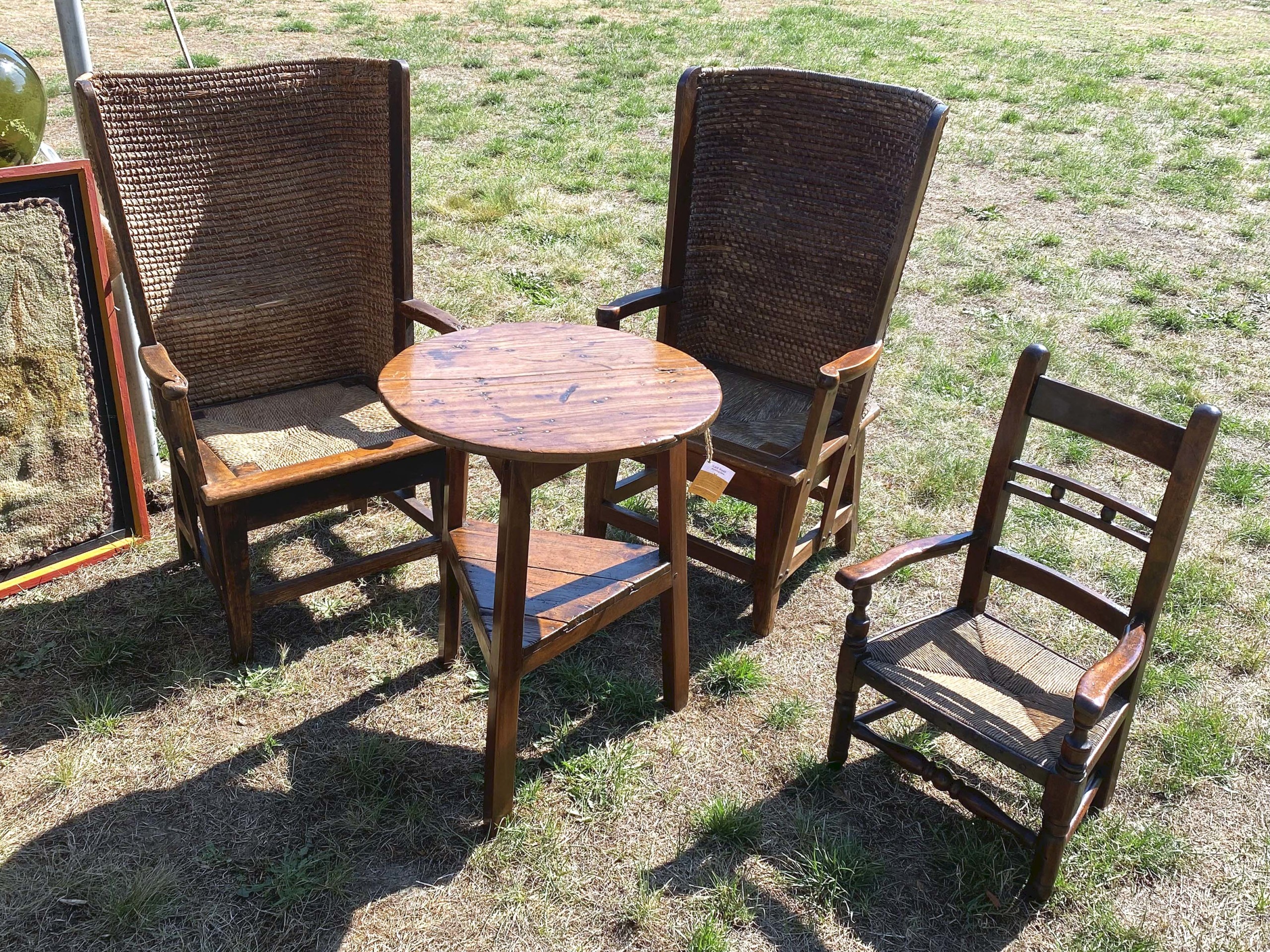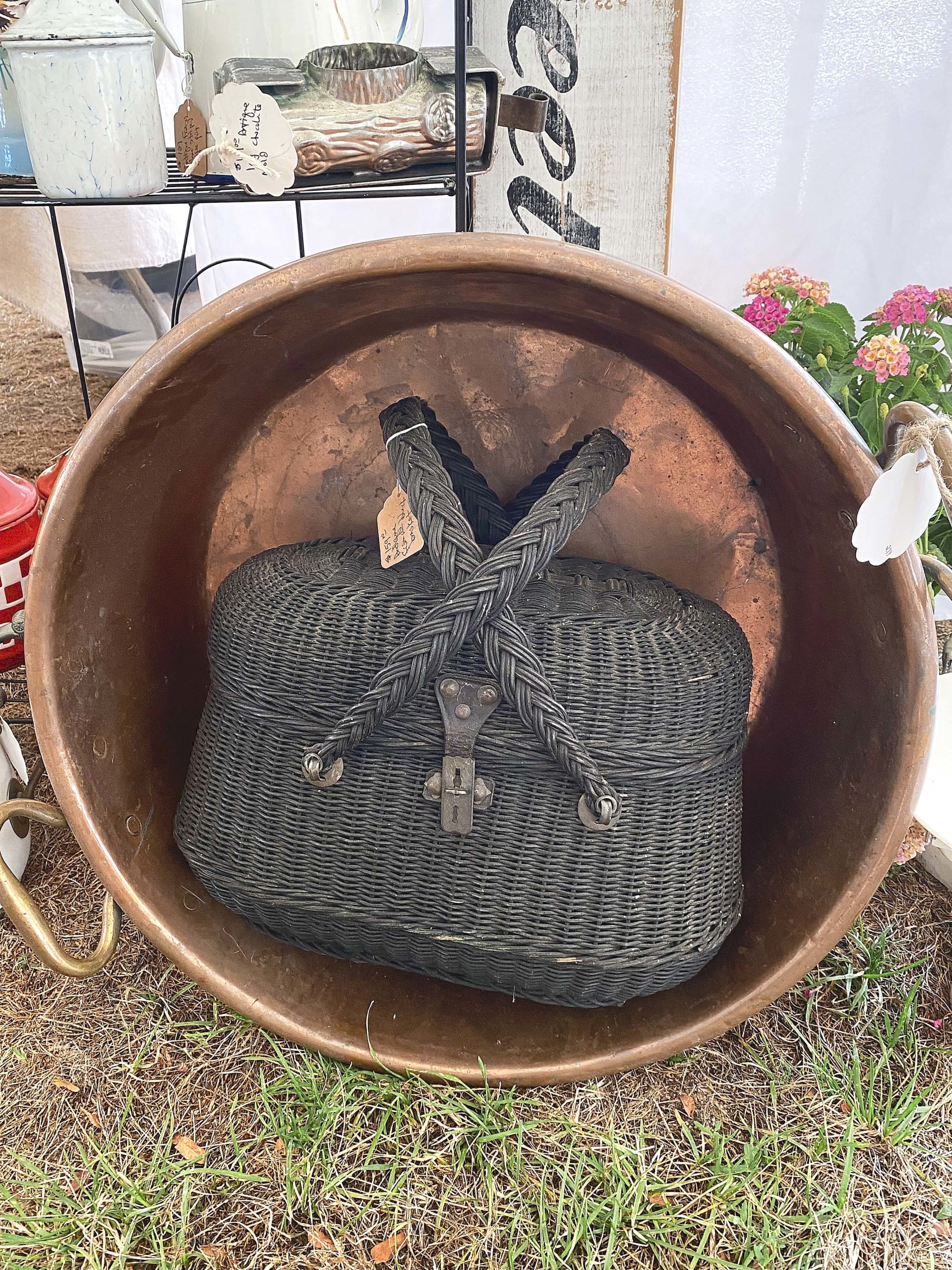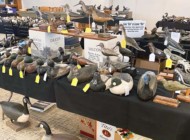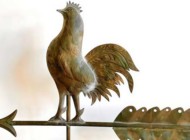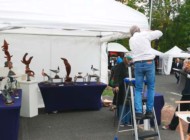
This pair of Nineteenth Century identified pastel portraits have stayed together since 1820, and, for the past 40 years, have been in the personal collection of Ed and Charlene Dixon, Eastham, Mass.
Review & Onsite Photos by Z.G. Burnett
ORLEANS, MASS. — The Nauset Regional Middle School welcomed the Cape Cod Antique Dealers Association (CCADA) for its 55th Annual Summer Antiques Show in Orleans, Mass., on Saturday, August 2, and, with warm sunshine and mild temperatures, the weather seemed to comply with what dealers and shoppers would hope for. Dealers came from all over the state and beyond, some setting up for the first time and others who have been selling with CCADA since the first show. Granting free admission to students and children under 18, as well as the school’s central location, encouraged young families from the area to attend. “It turned out to be our best show in recent memory, if not ever,” wrote Carl Goveia, president of the CCADA and owner of Nauset Antiques, Eastham, Mass. “The gate was very high in numbers and income compared to the past, and buyers kept coming in up until we closed… [Most] dealers did very well.”
Linda and Everett Reid of L&E Reid Antiques, Sandwich, Mass., were newcomers to the show and had a prime corner spot under one of the two large canopies on the school’s front lawn. The Reids made great use of the space, placing an assemblage of country furniture on its border. Most intriguing was a pair of armchairs with woven rush seats and barrel backs, gathered around a circular table. The chairs dated to the 1850s and were made by fishermen on the Orkney Islands in Scotland. “They’re pieces of folk art, themselves,” said Linda, who proved their condition and comfort by inviting this reporter to take a seat. The sturdy chair was indeed nap-worthy. In the center was a circular cricket table accompanied by a child’s armchair; both were Welsh and also mid Nineteenth Century. Though these did not sell during the show, the Reids had a good first show and sold a number of other items.

Without a panorama shot, the show’s two main tents are too long to photograph at once, with other dealers dotted around the edge of Nauset Middle School’s front lawn.
Brenda Foley of My Vintage VT Cottage, East Orleans, Mass., brought goods from even farther afield. Her booth was overflowing with French antiques, many of them from the Nineteenth or early Twentieth Centuries. Though these could be used solely for decoration, the majority were of such quality and condition to still be functional. A large copper jam pan shone even under the tent, housing a black-painted wicker basket that would make a fine vintage purse. Foley reported doing well at the show and even met some of her Etsy customers, who crossed the digital boundary into real-life shopping.
Whaling Days Antiques of East Wareham, Mass., brought an unassuming New England blanket chest that demonstrated hidden histories that many such pieces keep secret. The Nineteenth Century chest showed original red paint on the outer surface, but on the reverse the only visible paint was two white and red inscriptions of the same letter and consecutive dates… or so it seemed. Joshua Pepin pointed out that they were probably cabin and bunk numbers, having seen such sequences during his time at sleepaway camp. Wonderfully weathered, the chest’s top was reinforced with replacement hinges that would be concealed when placed against a wall.
Nearby, a provenance treasure trove was found on the rear surface of another object from Ed and Charlene Dixon, Eastham, Mass., cornerstone members of the CCADA. The Dixons presented a pair of pastel portraits showing Jane Sharland (1750-1832) and her husband, Peter Sharland. This information comes from a handwritten label that further revealed that the portraits were taken in Jane’s “70th year,” but does not specify Peter’s age or his birth and death dates. The frames are likely original, as another label below reads “J. Edwards; Carver, Gilder, Picture Framer” of Holloway Street, Exeter, UK. The couple’s names appear in Devonshire burial records, though the dates either do not match or are nonexistent. The Dixons kept the portraits in their personal collection for 40 years and decided it was time to move them along.

Carolann Burke Antiques displayed this Nineteenth Century majolica plate, which was in the style of Portuguese ceramicist Alvaro Jose Palissy and in excellent condition. Quincy, Mass.
One of the show’s most eye-catching ceramic wares was an unsigned majolica dish with a full-bodied crab, mussel shells and greenery from Carolann Burke Antiques, Quincy, Mass. Burke shared that the dish was in the style of Alvaro Jose Palissy, a Portuguese artist from Caldas da Rainha. It was likely made in the Nineteenth Century and showed no damage to its intricate details, which Burke believed would not be present in a Twentieth Century reproduction. Despite interest in the dish, it remains available at press time.
There was no question of who made a framed set of Ayvad’s Water-Wings that hung in the booth of Port Out Starboard Home (P.O.S.H.), Marion, Mass. The Ayvad Manufacturing Company, Hoboken, N.J., was best known for the patented invention that it produced around 1902 to 1915, and these wings are some of the earliest examples. Chris Donnelly, owner of P.O.S.H., also brought a large collection of vintage Japanese fishing flags (tairyo-bata) and floats that received “a great response” from customers. The flags were only flown when a boat returned with a bountiful catch and are believed to transmit the fishermen’s spirits through the bold designs and specialized tsutsugaki dyeing technique. Today, they are often seen during boat festivals and other celebratory events.

Vintage Lady Linens brought this colorful and original handkerchief by American textile designer Tammis Keefe that, unsurprisingly, sold by end of day. Milford, Conn.
Nancy Mayer of Vintage Lady Linens, Milford, Conn., brought a contender for the show’s brightest textiles but on a much smaller scale than P.O.S.H.’s tairyo-bata. Though handkerchiefs are no longer a handbag staple, those by known designers are still desirable for collectors. Meyer showed a block-printed linen example with pink and green dogs against a green background, a signature motif of American illustrator and designer Tammis Keefe. As an alumna of the Chouinard Institute of Art and Walt Disney Studios, Keefe was art director for Arts & Architecture magazine (published 1929-67) and studied under weaver and textile designer Dorothy Liebes (American, 1897-1972). Like her mentor, Keefe was one of the first women artists to achieve name recognition for her designs and created over 500 textiles for scarves and dish towels alone. Her work exists in the permanent collections of The Metropolitan Museum of Art and the Cooper-Hewitt Museum, and Keefe’s career has been revived over the last few decades. “Good modern design is simple and serene,”she told The Los Angeles Mirror in 1949. “It doesn’t break with the past — but it looks at the past with different eyes.”
For more information, 774-722-2108 or www.ccada.com.
